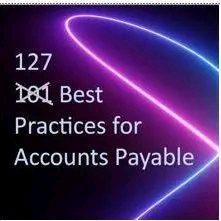Period Costs in Accounting

In the world of accounting, understanding different types of costs is essential for accurate financial reporting.
One crucial aspect is period costs, which play a significant role in determining a company’s overall financial health.
In this article, we will delve into the concept of period costs, explain their significance, and provide practical tips on how to find them in your accounting records.
What are Period Costs?
Period costs, also known as operating expenses, are expenses incurred by a business during a specific accounting period.
Unlike product costs, which are directly associated with the production of goods or services, period costs are not directly tied to the manufacturing process.
Instead, they are incurred for general business operations and are expensed in the period in which they occur.
Examples of Period Costs
1. Administrative Expenses:
These include salaries of administrative staff, office rent, utilities, office supplies, and other costs related to managing the business.
2. Selling and Marketing Expenses:
Costs associated with advertising, sales commissions, marketing campaigns, trade shows, and any other activities aimed at promoting and selling products or services.
3. Research and Development (R&D) Costs
Expenses related to the development of new products, processes, or services, such as salaries of R&D personnel, prototyping, and testing costs.
4. Depreciation:
Periodic allocation of the cost of long-term assets, such as buildings, machinery, and equipment, over their useful lives.
How to Identify Period Costs in Accounting
To identify period costs accurately, follow these steps:
1. Review Your Chart of Accounts:
Examine your chart of accounts and look for expense accounts specifically designated for period costs. These accounts are typically separate from those used for direct production-related costs.
2. Analyze General Ledger Entries:
Analyze the entries in your general ledger and identify expenses that are not directly associated with production, but rather relate to general business operations.
3. Check Expense Classifications:
Ensure that expenses are correctly classified as period costs rather than product costs. This involves scrutinizing the nature and purpose of each expense.
4. Consult Financial Statements:
Review your income statement, also known as the profit and loss statement, which provides a summary of your period costs during a specific accounting period.
FAQs
Can period costs be capitalized?
No, period costs cannot be capitalized. They are expensed in the period in which they occur and do not contribute to the value of any specific product or service.
Are all selling and marketing expenses considered period costs?
Yes, selling and marketing expenses, including advertising, sales commissions, and trade show expenses, are typically classified as period costs.
Are salaries of production workers considered period costs?
No, the salaries of production workers are considered part of product costs since they are directly related to the production process.
How do period costs differ from product costs?
Period costs are not directly tied to the production process and are expensed in the period incurred. In contrast, product costs include direct materials, direct labor, and manufacturing overhead, and are assigned to the goods or services produced.
Also Read: How to Calculate Total Period Cost in Managerial Accounting





